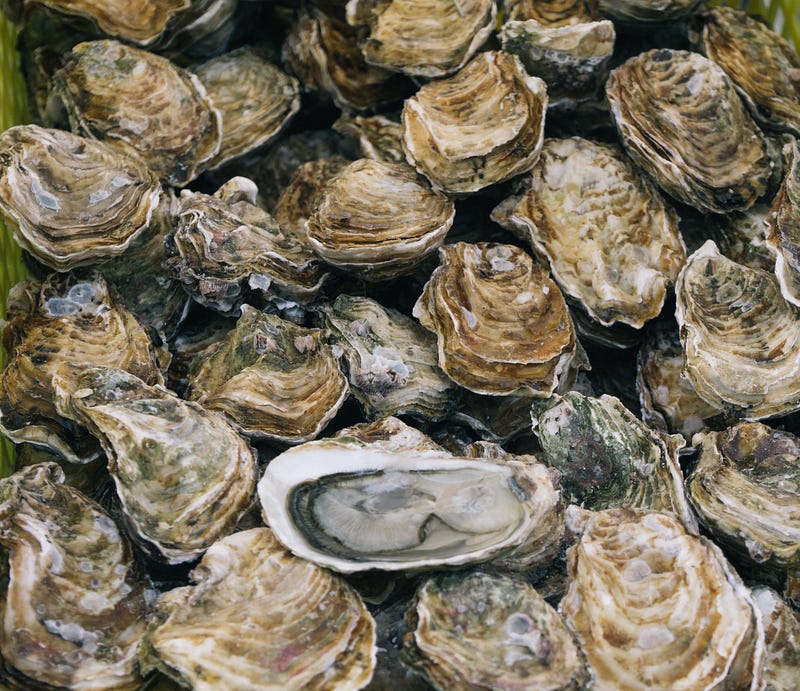Why You Can Enjoy Oysters in Summer Heat Without Worry
Written on
Chapter 1: The Allure of Oysters
Oysters are a culinary delight that I can't resist. Whether served raw on the half shell with a squeeze of lemon and a refreshing cucumber mignonette, broiled with a tangy sweet-and-sour sauce, or roasted with garlic and butter, I relish every bite. I've been known to indulge in several dozen at once, stopping only when my wallet runs dry.
In the Pacific Northwest, oysters are a seasonal favorite, thanks to thriving local farms in the Hood Canal region south of Seattle. Notable producers like Hama Hama Oysters and Taylor Shellfish supply these delicacies year-round to various locations in the Pacific Northwest and beyond.

Every summer, I make it a point to order a few dozen oysters shipped directly to my home, hosting an oyster feast with friends. I usually place my order during Seattle's warmest month, August, when temperatures often soar into the 70s and 80s. The oysters are shipped on ice overnight, but I often ponder why I can enjoy these treats in my backyard when harvesting them from the ocean during similar temperatures is off-limits.
Section 1.1: The Risks of Wild Oysters
Many public beaches and state parks are closed to shellfish harvesters due to high bacteria levels in the water during July and August. Shellfish are highly susceptible to temperature changes; as water temperatures rise, bacteria and viruses such as E. coli and Enterococci thrive. When shellfish filter water, they can accumulate these harmful microbes, making those who consume them during peak toxin concentrations seriously ill. Consequently, most oyster harvesting areas are closed off during the same months I enjoy my farmed oysters, and the public is advised against consuming wild catches.
Subsection 1.1.1: Why Farmed Oysters Are Safe
The distinction between farmed and wild oysters boils down to modern farming practices. Oyster farms typically have access to cooler water, which is crucial. One reason to avoid wild oysters in the summer is that they spawn in warmer conditions. During spawning, they convert glycogen into gametes (sperm and eggs), causing them to become softer and less palatable. Oyster farmers can relocate their stock to cooler waters during the summer months to prevent spawning and limit bacteria intake. This allows them to harvest oysters from the coldest waters and deliver them fresh to your doorstep.

Many cultivated oyster varieties have also been selectively bred to be sterile, ensuring they won't spawn regardless of water temperature. This allows farmers to guarantee great flavor all year round. Our local oyster beds are home to several Asian oyster varieties, like Kumamoto and Kusshi, which thrive and produce delicious, tender oysters—perfect for pairing with a chilled glass of white wine by the shore.
Section 1.2: Commitment to Safety
Oysters filter water through their tissues, extracting nutrients while releasing purified water back into the ocean. As such, they can serve as natural filtration systems in polluted areas, tackling issues from toxic algal blooms to septic failures.
Oyster farmers maintain rigorous testing protocols to monitor toxins and microbial levels. Continuous water quality assessments and oyster meat testing help ensure cleanliness, significantly reducing the risk of illness. U.S. oyster safety regulations are among the strictest globally, making it challenging for oysters from less regulated sources, such as the European Union, to enter the U.S. market.
Once harvested, oysters are kept chilled in large refrigeration facilities and packed on ice for shipment, ensuring they remain at safe temperatures during transit from farm to table.
Chapter 2: Enjoying Oysters in Warm Weather
Even with temperatures soaring to 85 degrees this week, I'm excited to indulge in at least a dozen oysters, thanks to the modern safety measures and farming techniques employed by local oyster producers. I hope you have the chance to savor some as well!
Video Description: Explore the age-old debate: Should you eat oysters in months without an "R"? This video discusses the seasonal eating habits associated with oysters.
Video Description: Learn why many consider winter and spring the prime seasons for enjoying oysters. This video delves into the factors that influence the best times to indulge in these delicacies.